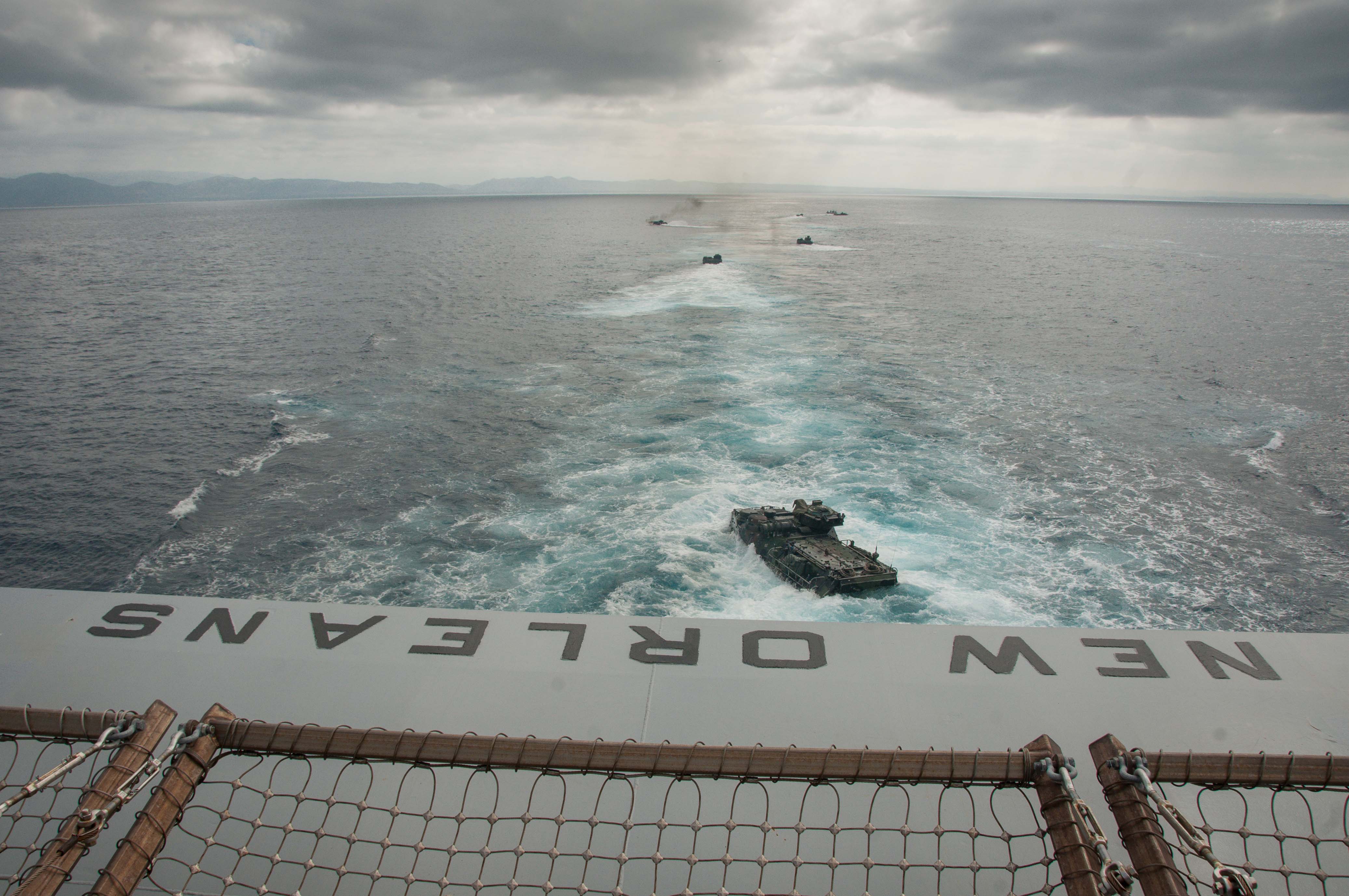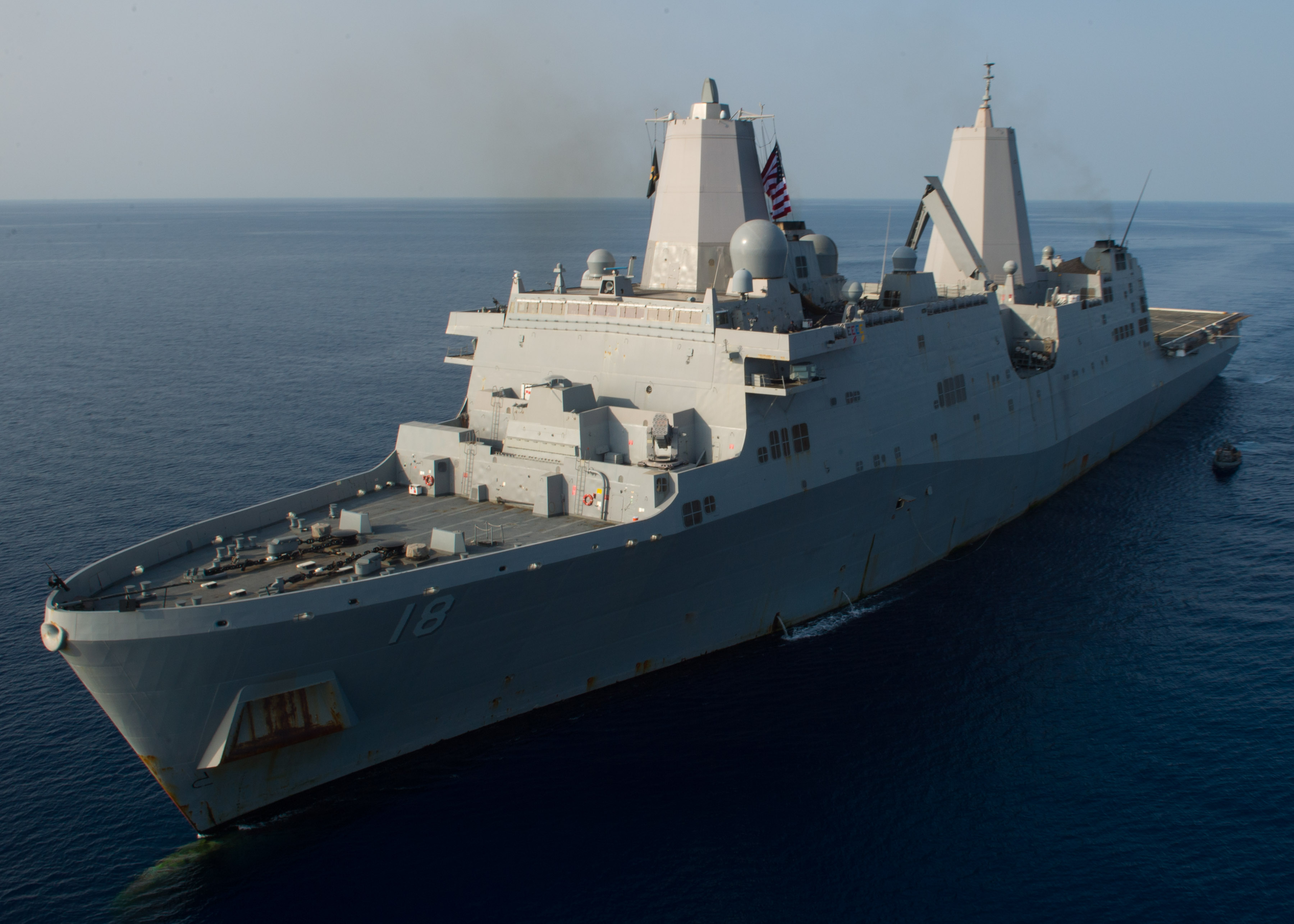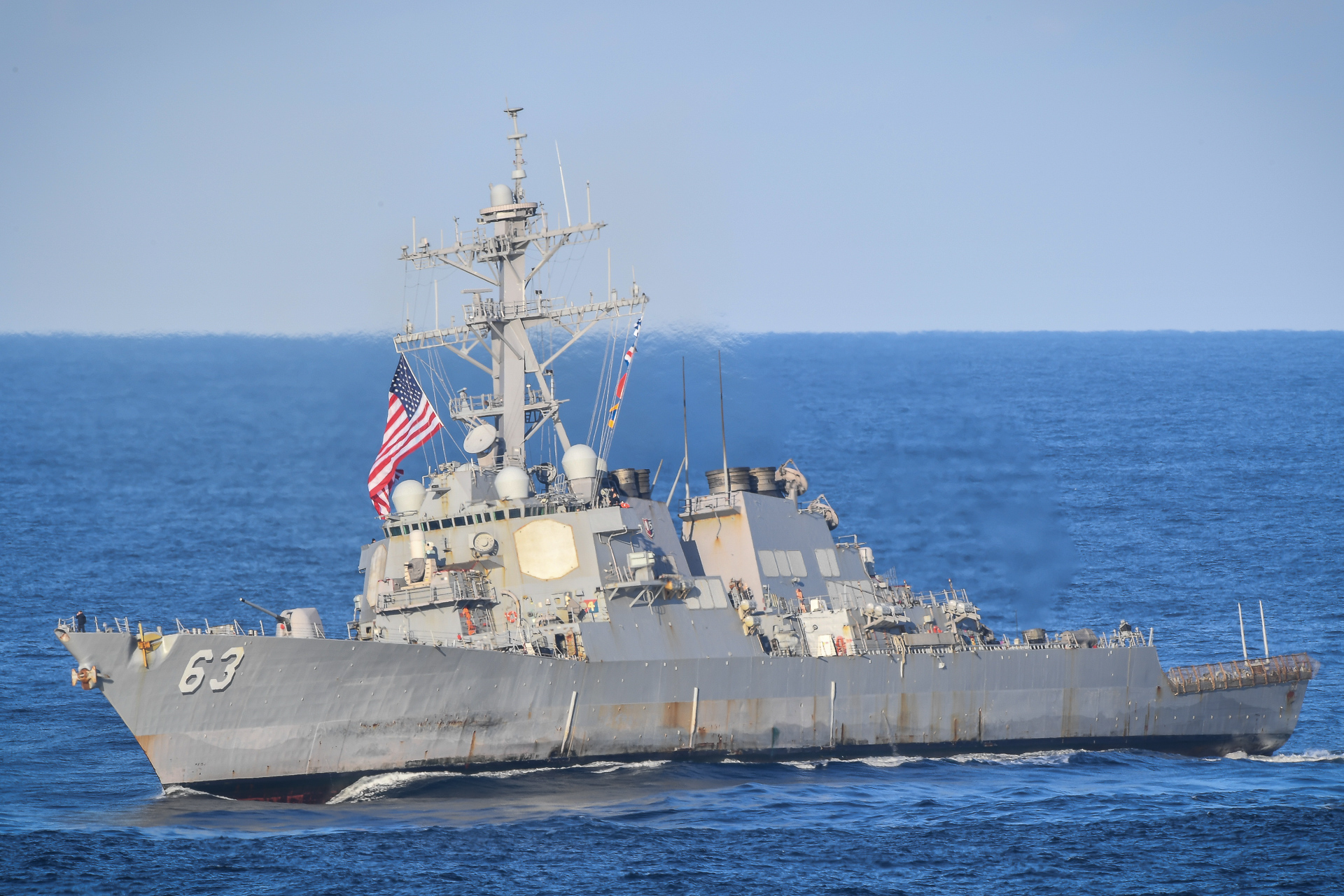
US Navy photo.
This post has been updated to note that USS New Orleans would be the fifth amphibious ship forward-deployed to Japan. USS Germantown (LSD-42) is also homeported in Japan and was not included in the original version of this story. The future amphibious force in Japan will include two LSDs, two LPDs and an America-class LHA.
The Navy is adding a fifth amphibious ship to its forward-deployed fleet in Japan and is bringing home one of the destroyers that has been forward-deployed the longest, the service announced.
The service will now have two San Antonio-class amphibious landing docks in Japan, with the upcoming addition of USS New Orleans (LPD-18). Multiple Navy personnel told USNI News that the move is meant to add flexibility to the Forward-Deployed Naval Force Japan fleet, which is responsible for conducting training and partner-building activities throughout the Pacific region as well as responding to natural disasters throughout the area.
USNI News understands that the Navy does not plan to operate a four-ship Amphibious Ready Group with the addition of New Orleans, but rather having a second LPD will allow more flexibility to conduct maintenance on USS Green Bay (LPD-20), USS Ashland (LSD-48) and USS Germantown (LSD-42) as needed and still be able to generate a ready three-ship ARG.
Having a fifth amphibious ship could also create more options for deployments, particularly when dealing with humanitarian assistance and disaster relief needs in the theater. Between August and November of 2018, Ashland made three separate trips out to the Northern Mariana Islands to assist in typhoon cleanup efforts and help rebuild homes and buildings on hard-hit islands – a key part of the mission for the FDNF amphibious fleet, but also a mission that geographically took one-third of the deployed ARG away from bilateral and multilateral training events and other planned assignments. Having another amphibious ship that is not attached to the ARG could provide fleet commanders more options for disaster response missions going forward, USNI News understands.
Also included in the upcoming ship swap, forward-deployed amphibious assault ship USS Wasp (LHD-1) will return to Norfolk, Va., for maintenance and will be replaced by USS America (LHA-6), which USNI News first reported in January. America is an aviation-optimized amphibious assault ship without a well deck for surface connector operations, but its larger flight deck and larger internal aviation maintenance spaces will allow it to support more F-35B Joint Strike Fighters and MV-22B Ospreys than Wasp could.

Lt. j.g. Rachel McMarr, a U.S. Pacific Fleet spokeswoman, told USNI News that “USS America (LHA-6) and USS New Orleans (LPD-18) are forward deploying in support of the [U.S. Indo-Pacific Command] Theater Posture Plan. This force structure change greatly enhances the national security of the U.S. and improves our ability to protect our interests while reassuring our friends and allies in the region of our commitment to peace, stability and prosperity with unfettered access to the sea lanes for all nations in the Pacific. USS America recently underwent modernization to prepare the ship for operations with the F-35B Joint Strike Fighter and upgraded key systems throughout the ship.”
On the destroyer side, USS Stethem (DDG-63) will leave Japan and head to a mid-life maintenance and modernization period, after serving in the FDNF fleet in Japan since 2005.
In the fallout of the 2017 USS Fitzgerald (DDG-62) and USS John S. McCain (DDG-56) collisions in U.S. 7th Fleet, there was some discussion between the Navy and congressional lawmakers regarding the length of time some ships were allowed to stay homeported overseas. The House Armed Services Committee kicked around a proposal to limit ships to serving only seven to 10 years abroad before having to come home for maintenance. Adm. Phil Davidson, who then served as the commander of U.S. Fleet Forces Command and now serves as INDOPACOM commander, said the Navy tries to rotate ships home for maintenance regularly but didn’t want to be held to a strict requirement due to the strain it puts on the rest of the fleet to make that swap. Every time a destroyer is rotated back to a U.S. homeport for maintenance and modernization, he said, another destroyer is taken out of the deployment rotation to do maintenance and prepare to move abroad as the replacement.
Stethem, a 24-year-old destroyer that has served 14 years in Japan, where the destroyers are worked hard on a somewhat unpredictable schedule – compared to the more routine deployment cycles for destroyers deploying out of Norfolk or San Diego – “will undergo an Extended Docking Selected Restricted Availability and be fitted with the latest combat system suite, which includes state of the art air defense, ballistic missile defense, surface warfare and undersea warfare capabilities,” McMarr said.

The effect of Stethem leaving is hard to measure. The FDNF-J destroyer fleet was up one ship after USS Milius (DDG-69) arrived in May 2018, but it is down two destroyers while Fitzgerald and McCain continue repairs following their collisions. McCain is being repaired in Yokosuka, Japan, and is now out of the dry dock and finishing up work to rejoin the fleet later this year. Fitzgerald just left its dry dock at the Ingalls Shipbuilding yard in Mississippi earlier this month, and it is unclear when that ship will finish its repairs and be able to rejoin the fleet.
While Fitzgerald and McCain have been in repairs, other destroyers have surged forward – either peeling off from their carrier strike groups or coming forward as independent deployers – to help ease the burden on the remaining destroyers in FDNF-J.
McMarr told USNI News that “there will not be any capability deficiency in the Western Pacific as other assets and deployments are scheduled to provide commanders with needed capability to fully and effectively carry out assigned missions.”
“U.S. Navy long-range planners constantly evaluate whether ships, aircraft, and equipment are being used effectively and efficiently,” she added.
“Further decisions involving changing homeport assignments will be announced when appropriate.”





